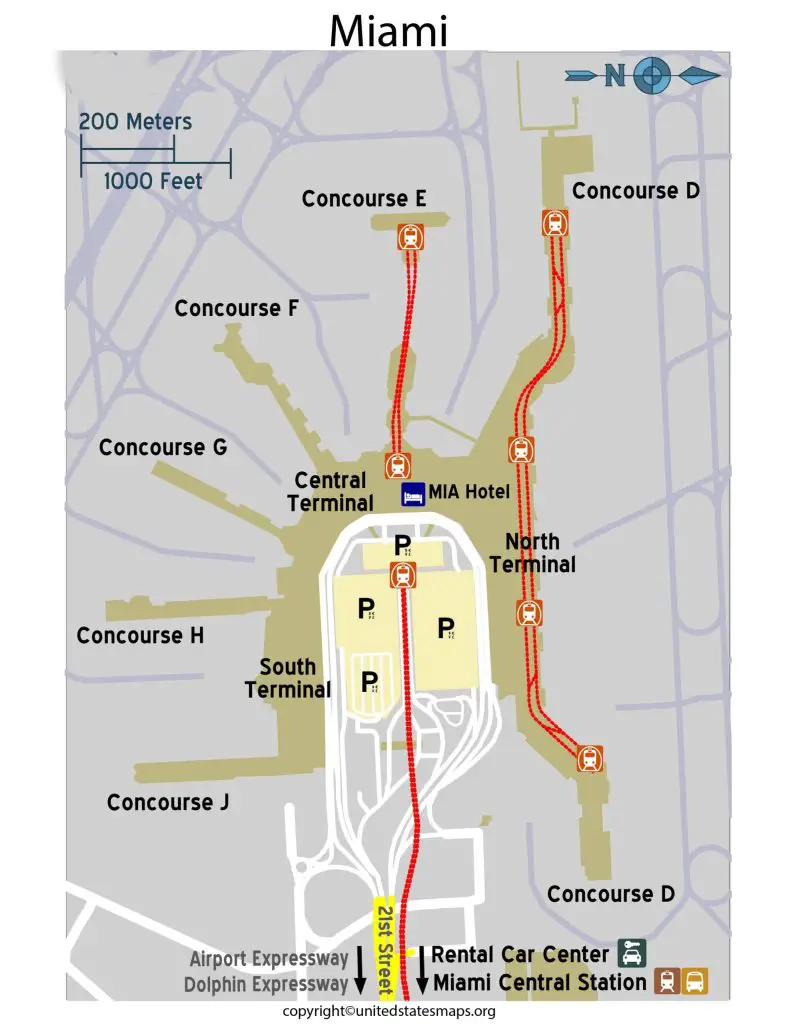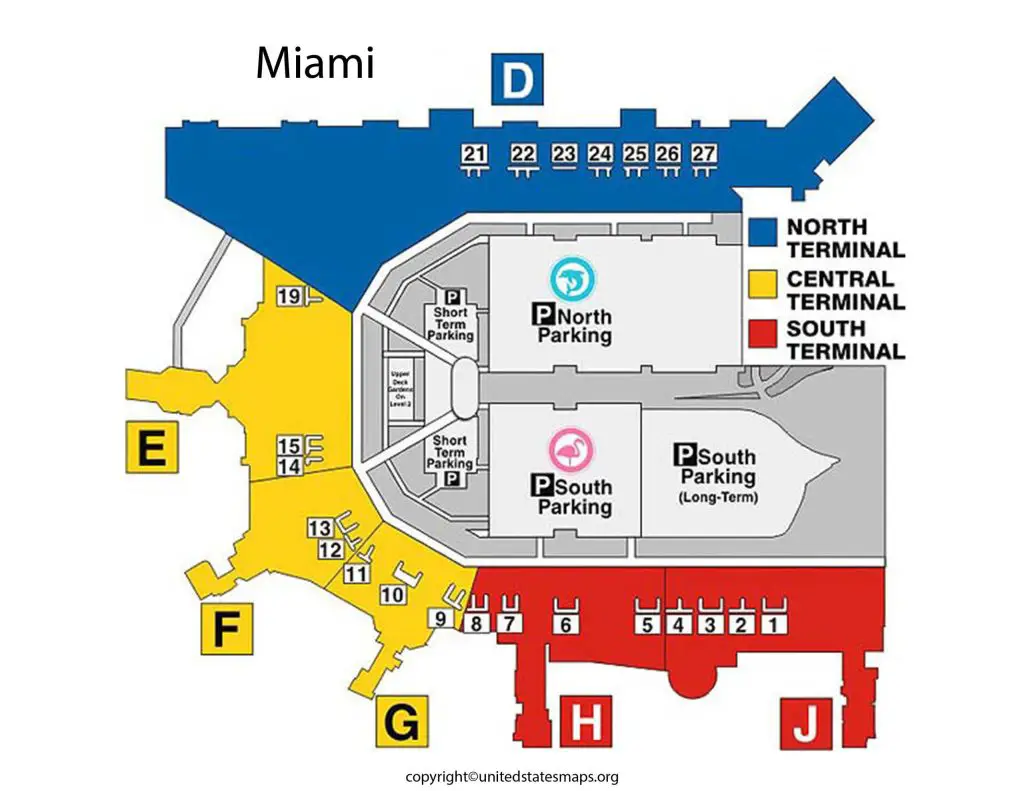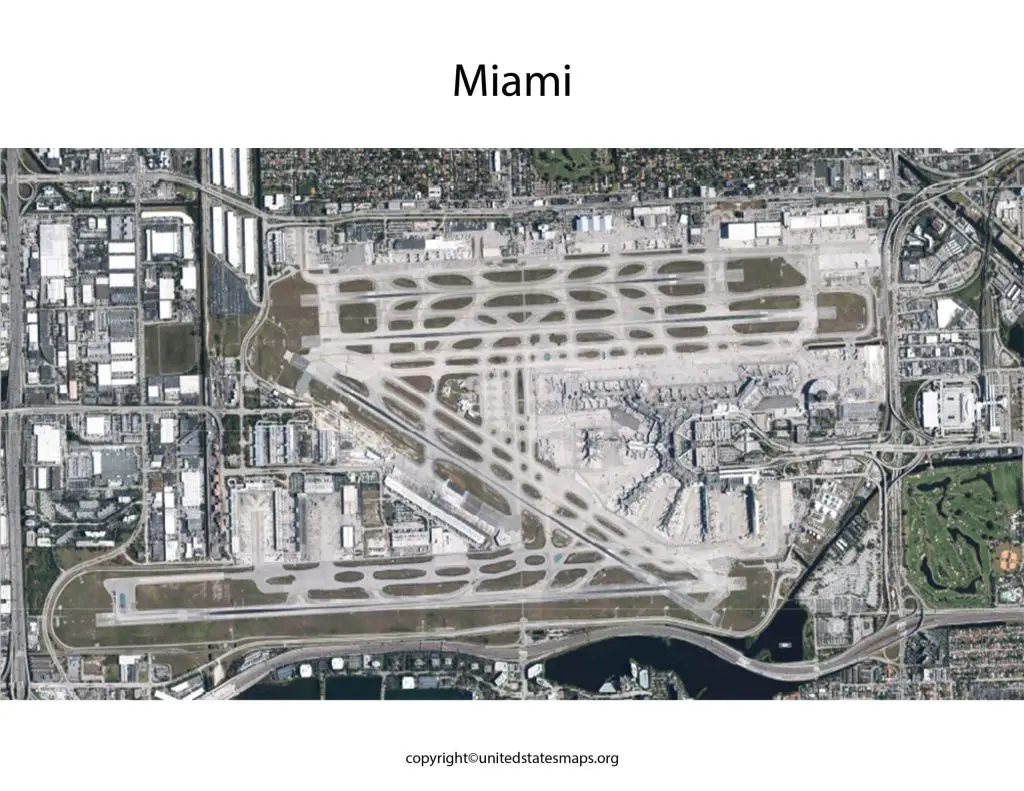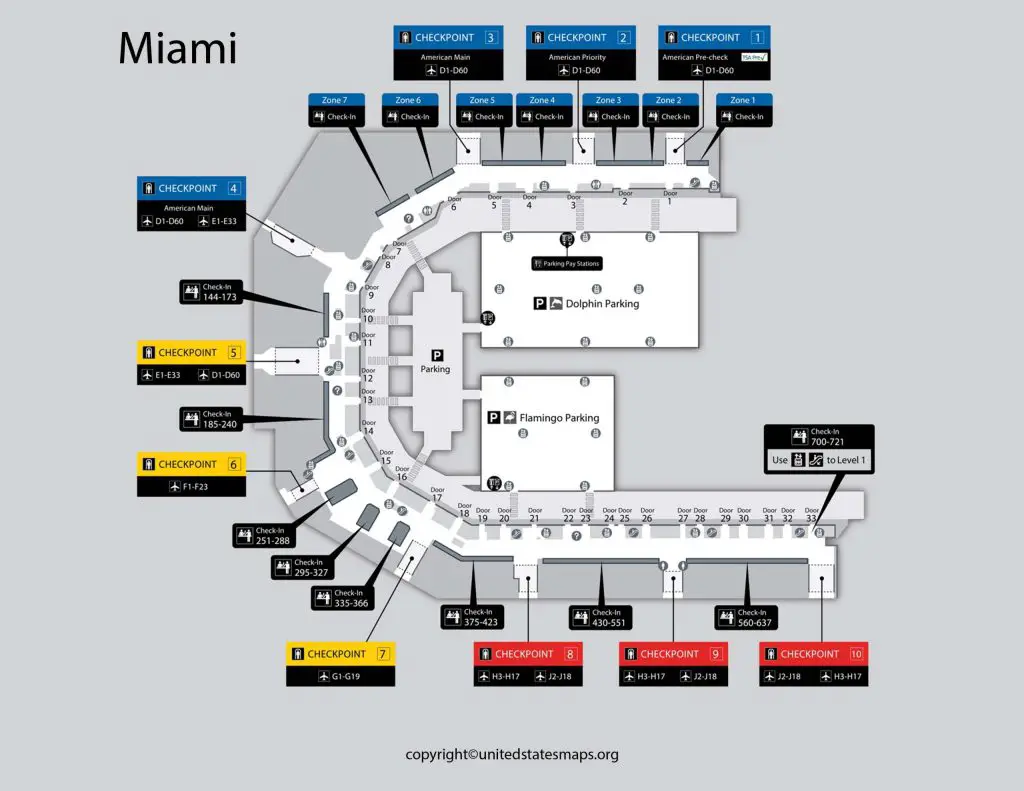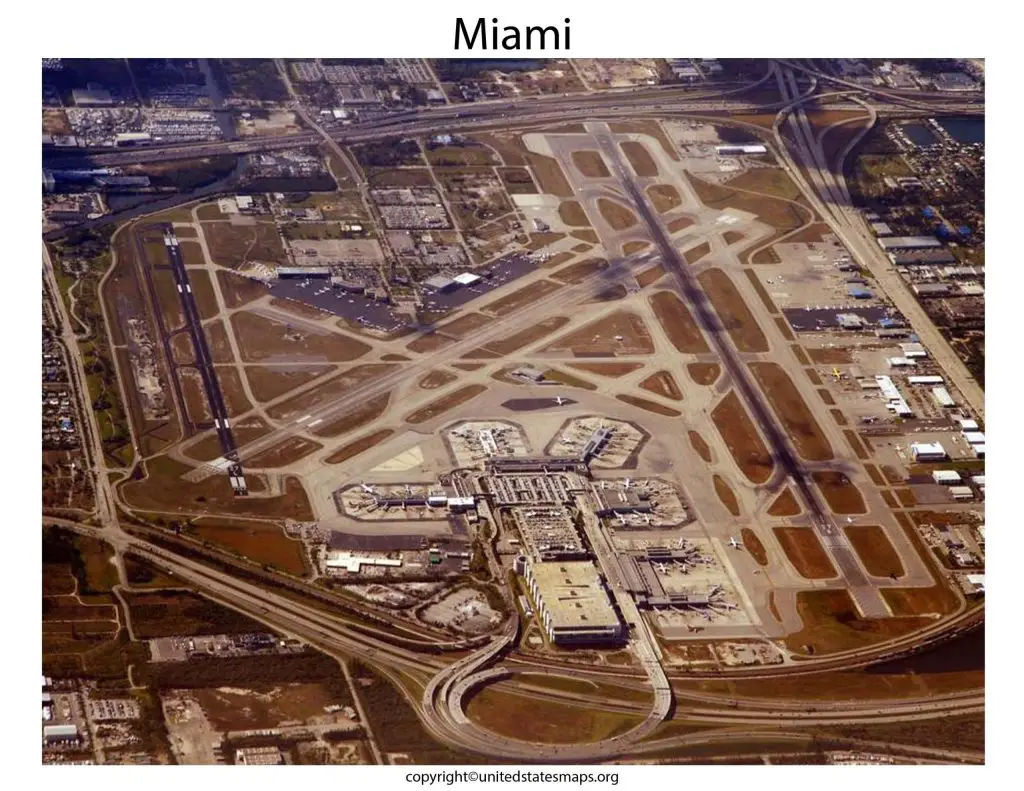Miami Airport Map: The Miami Airport, officially known as Miami International Airport (MIA), is a major international hub located in Miami-Dade County, Florida. Serving as the primary gateway to Latin America and the Caribbean, MIA is one of the busiest airports in the United States. Navigating through such a large and bustling airport can be a daunting task, but with the help of the Miami Airport Map, travelers can easily find their way around.
Miami Airport Map
The Airport Map of Miami provides a comprehensive layout of the airport’s terminals, concourses, gates, amenities, and transportation options. Whether you’re a first-time visitor or a frequent flyer, this map serves as a valuable resource to plan your journey and ensure a smooth travel experience. Check out other Miami Map:- Miami Zip Code Map.
The Map of Miami Airport is a comprehensive overview of the entire airport complex, providing a visual representation of its terminals, concourses, gates, facilities, and transportation infrastructure. This map serves as a go-to resource for passengers, airport staff, and visitors, offering a detailed layout of Miami International Airport.
From ticketing areas to security checkpoints, from baggage claim zones to parking structures, the Map of Miami Airport encompasses all essential aspects of the airport’s physical layout. It helps travelers plan their routes, locate amenities, and familiarize themselves with the overall structure of the airport, ensuring a seamless and efficient travel experience for all.
Miami Airport Terminal Map
The Miami Airport Terminal Map is an essential tool for travelers who want to familiarize themselves with the layout of the airport’s terminals. Miami International Airport has three main terminals: North Terminal (Concourse D), Central Terminal (Concourse E), and South Terminal (Concourses H and J). Each terminal offers a range of services and amenities to enhance passenger comfort and convenience.
Miami Airport Terminal D, part of the North Terminal, is a significant hub for both domestic and international flights. The Terminal D Map offers a detailed layout of this specific terminal, providing travelers with a comprehensive overview of its facilities, amenities, and services.
Terminal D houses various airlines and offers numerous departure gates, security checkpoints, baggage claim areas, and immigration and customs facilities. The Miami Airport Terminal D Map enables passengers to locate their specific gate, find nearby dining options, discover retail stores, and access other services available within the terminal. Whether you’re arriving or departing from Terminal D, this map ensures a seamless travel experience within this specific area of Miami International Airport.
The Terminal Map highlights the locations of ticketing counters, security checkpoints, baggage claim areas, airline lounges, information desks, restrooms, and various dining and shopping options within each terminal. By referring to this map, passengers can easily navigate between terminals or find their way to specific gates or facilities.
Miami Airport Arrivals Map
The Miami Airport Arrivals Map is designed to assist travelers upon their arrival at Miami International Airport. Navigating through a busy airport after a long flight can be overwhelming, but with the help of this map, passengers can quickly find their way to baggage claim areas, ground transportation options, and other essential facilities.
The Miami Airport Food Map is a gastronomic guide for travelers looking to satisfy their hunger while transiting through or departing from Miami International Airport. With a wide range of dining options available, the food map helps passengers locate restaurants, cafes, bars, and grab-and-go kiosks throughout the airport.
From fast-food chains to upscale eateries, the Miami Airport Food Map showcases the diverse culinary offerings available at the airport. Whether you’re craving international cuisine, local delicacies, or quick snacks, this map highlights the locations of various dining establishments, their specialties, and operating hours. Travelers can enjoy a delicious meal or grab a quick bite before their flight, all conveniently located within the airport premises.
The Arrivals Map highlights the locations of baggage carousels, customs and immigration checkpoints, transportation hubs (such as taxi stands, rental car counters, and public transportation stations), information desks, and other amenities available to arriving passengers. By referring to this map, travelers can efficiently proceed through the arrival process, retrieve their luggage, and seamlessly transition to their next destination.
Map of Miami Airport Concourses
The Miami Airport Gate Map is an indispensable resource for passengers navigating the vast array of gates at Miami International Airport. With multiple concourses and numerous gates, finding the correct boarding gate can sometimes be challenging, especially for connecting flights or travelers unfamiliar with the airport layout.
The Gate Map provides a detailed overview of each concourse, including the gate ranges within them. But by referring to this map, passengers can easily locate their departure gates or find the gates for connecting flights. Additionally, the Gate Map may also include information on nearby amenities, such as restrooms, lounges, or duty-free shops, to help passengers make the most of their time before boarding.
The Map of Miami Airport Concourses is a detailed guide specifically focused on the concourses within Miami International Airport. With multiple concourses serving various airlines and destinations, this map helps passengers navigate through the airport’s vast layout with ease.
The Concourse Map provides an overview of each concourse, highlighting the locations of gates, airline lounges, restrooms, dining options, and other amenities within each concourse. By referring to this map, travelers can find their gates, explore nearby services, and make the most of their time before departure or during layovers. This map is particularly useful for passengers with connecting flights, as it allows them to efficiently move between different concourses without getting lost.
